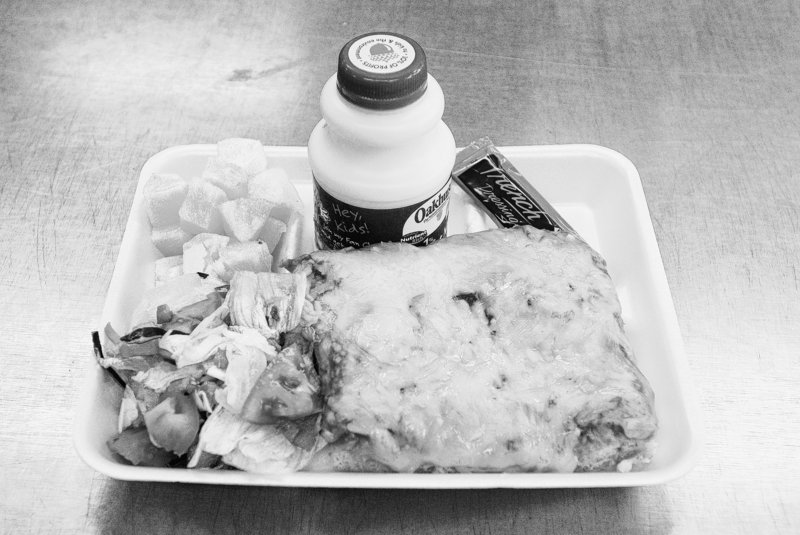Sens. Olympia Snowe and Susan Collins and Reps. Chellie Pingree and Mike Michaud deserve a public thank-you for supporting recent legislation to renew and strengthen child nutrition programs.
The law upgrades federal school nutrition standards for the first time in 16 years and provides assistance to schools to teach children and their families about better food choices and healthier lifestyles. It’s a good start toward addressing the serious issue of child obesity.
As retired Navy officers, we know that military recruiters across our country are turning away otherwise excellent recruits because they are overweight. In fact, one in four young adults is simply too fat to fight, according to the Defense Department.
In Maine, 30 percent of our young adults are overweight or obese, according to the Centers for Disease Control and Prevention. The military also discharges more than 1,200 first-term enlistees because of weight problems. Recruiting and training replacements costs $50,000 per person, or $60 million annually.
Clearly, obesity is threatening our national security. It is also threatening the future health of too many young Americans in all walks of life.
That’s why we were pleased to join Mission: Readiness, a national group of retired generals and admirals, in supporting efforts to improve child nutrition in our schools. We are pleased that our Maine members of Congress helped pass this important legislation in a bipartisan manner.
J. D. Williams, Vice Admiral
U.S. Navy (Retired)
Westport Island
Dugan Shipway, Rear Admiral
U. S. Navy (Retired)
Bath
As children’s health remains a national concern, passage of the Healthy, Hunger-Free Kids Act couldn’t have come at a better time. The bill will make for healthier school environments by setting higher nutritional standards for foods sold at school, strengthening local school nutrition and physical activity wellness policies, and providing funding for farm-to-school programs.
The bill also takes steps to address childhood hunger by improving access to important child nutrition programs.
I’d like to personally thank Maine’s members of Congress for voting for this strong child nutrition legislation to help curb unhealthy eating habits among children and premature health conditions such as high blood pressure and type 2 diabetes.
The sooner our kids have access to healthier food in schools, the sooner we can reduce obesity rates.
Lori A. Kaley, MS, RD, LD, MSB
American Heart Association Spokesperson
Chair, Maine Public Health Association Obesity Policy Committee
Manchester
Slow speed of snail mail doesn’t make it better
The recent letter writer who chastised the Maine Department of Transportation for sending documents by e-mail shouldn’t be so quick to tout the services of the U.S. Postal Service. My experience is as follows:
Back in May, I needed to send some documentation to a company in Waukesha, Wisc., which I sent certified mail, return receipt requested. Not having received the return receipt after abut two weeks, I went online to check the status of the mail. The Postal Service web site showed:
1. The mail had been delivered in Waukesha on May 27 at 9:11 a.m.
2. The mail had been refused the same day at Genesee Depot, Wisc., at 3:35 p.m., and was being returned to me. If the mail had actually been delivered, I should have received the return receipt. If the mail was refused, it should have been returned to me. It is now December and I have received neither.
Of course, that really shouldn’t surprise me. It is not uncommon these days for my mail to be delivered to the family who lives around the corner on a different street, and I get the mail for either my neighbor across the road or my neighbor next door.
Snail mail seems to be moving into the era of “fail mail.”
John Bell
Arundel
Dirigo Health participants will see immediate benefits
On Nov. 30, the Press Herald reported on testimony by Trish Riley, director of the Office of Health Policy and Finance, regarding the impact of the Affordable Care Act on Maine’s Dirigo Health program.
It was stated that some of the 500 employers who participate in Dirigo may drop their health plans and encourage their employees to seek insurance through exchanges that will be operational in 2014.
What was missing from the discussion was the immediate benefits to small businesses that provide health coverage included in the Act. Starting this year, the Act offers tax credits for small employers who pay at least half of their employees’ health insurance premiums. Businesses with fewer than 25 employees who make an average of $50,000 or less may be eligible for a credit of up to 35 percent of the premiums they pay on their employees’ behalf. For small nonprofits, it’s up to 25 percent.
In 2014, those credits will increase to up to 50 percent and 35 percent, respectively. It is estimated that these tax credits will save America’s small businesses $40 billion over the next nine years.
2014, health insurance “exchanges” for small businesses will open in every state. The exchanges will allow small businesses to band together to create purchasing power for up to 100 employees. According to the Congressional Budget Office, this could help drive down premiums by as much as 4 percent in the marketplace of small-business health plans.
Recently, the Obama administration released new guidelines that will make it easier for small businesses to claim their 2010 tax credit, clarifying that a broad range of employers meet the eligibility requirements, and providing a one-page form on how to claim the 2010 tax credit. Information can be found at www.irs.gov.
Jeanne A. Hulit
New England regional administrator
U.S. Small Business Administration, Boston
Falmouth
What’s with construction of the new railroad bridge?
Perhaps your newspaper sources might be able to answer a question that I, my 20 or more co-workers and scores of other people have been asking.
The new railroad bridge being installed on Route 35 near the Standish ball park, just west of Route 237 — is it ever going to be finished?
Traffic was a mess there all summer. I haven’t seen any work being performed there in weeks, yet the road construction signs are still present, the speed limit is still reduced, and come snowfall, it’s going to be an accident waiting to happen. Where are they going to plow the snow?
If they cannot afford to finish this project, perhaps they could just put four or five planks across and those of us who travel it twice a day will take our chances.
Buck Buchanan
Parsonsfield
Send questions/comments to the editors.





Success. Please wait for the page to reload. If the page does not reload within 5 seconds, please refresh the page.
Enter your email and password to access comments.
Hi, to comment on stories you must . This profile is in addition to your subscription and website login.
Already have a commenting profile? .
Invalid username/password.
Please check your email to confirm and complete your registration.
Only subscribers are eligible to post comments. Please subscribe or login first for digital access. Here’s why.
Use the form below to reset your password. When you've submitted your account email, we will send an email with a reset code.